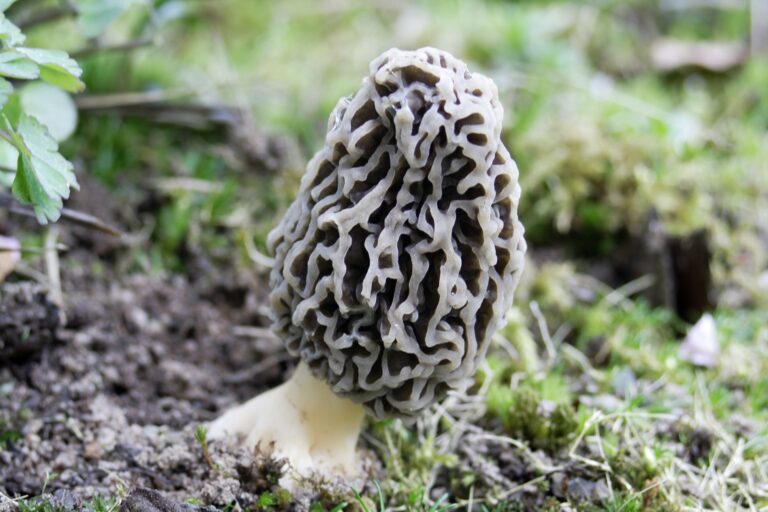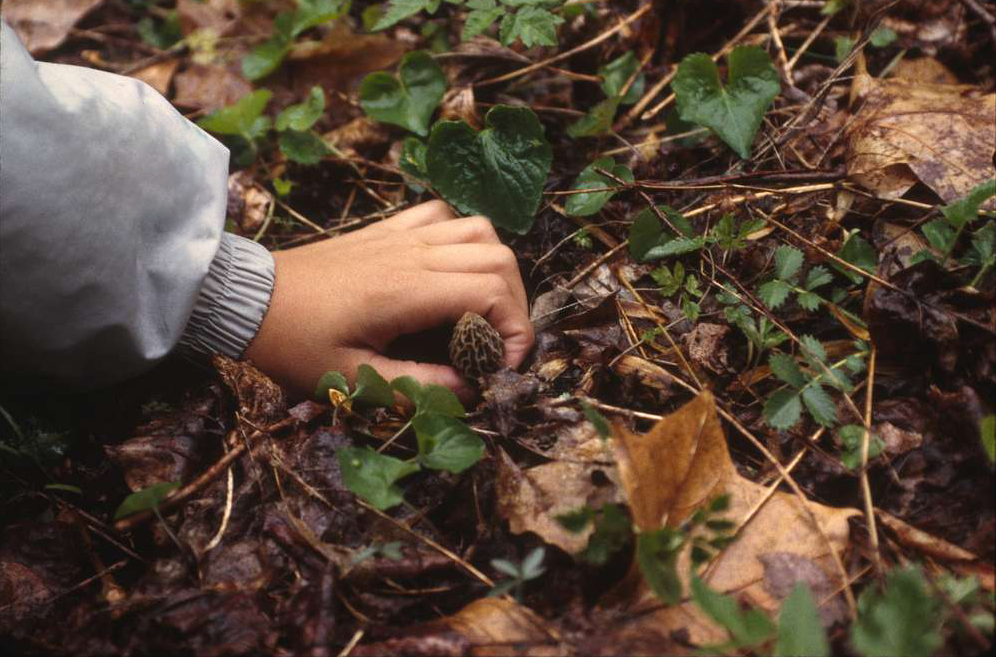Morel Mushroom Hunting Tips
These morel hunting tips will help you learn how to find morels this season. Spring is coming up soon, which means morel mushroom season is just around the corner. But what are morel mushrooms exactly?
Morels are a type of wild mushroom that can only be harvested in the wild, and morels appear to be most commonly found on certain types of trees (primarily oak and pine).
If you’re thinking about hunting for morels this year, then read on! Here’s our list of morel mushroom tips that will help you find these delicious fungi.
What is a morel mushroom?
Morel mushrooms are a type of mushroom that can only be harvested in the wild. They are typically found on certain types of trees, such as oak and pine.
Morel mushrooms have a unique appearance: they are cone- or umbrella-shaped, and their surface is covered with pits and ridges.
They are brown to black in color, with a white stem.

Where do morel mushrooms grow?
Morel mushrooms can be found all over North America, but they seem to grow most commonly in the Midwest and the Northeast United States.
They can also be found in parts of Canada, Europe, Asia, Australia, and South Africa.
When is morel mushroom season?
The peak season for morels is usually during the spring, from March to May. Outside of peak season, though, they can sometimes be found from early summer to late fall.
How do I identify a morel mushroom?

Morel mushrooms are relatively easy to identify, as they are the only mushroom that is cone- or umbrella-shaped. Their surface is also covered with pits and ridges.
Morels have a wrinkly cap, and they can be found in a variety of colors, including black morels that are dark gray or brown with a purple tint.
How do I find morel mushrooms?
There are a few different ways to go about finding morels. One way is to look for them near the bases of trees – morels typically grow in clusters near the roots of certain types of trees.
Another way is to watch for areas that have been recently burned or disturbed, as morels often grow in these areas. You can also scout around old homesteads and abandoned farms, as morels are often found in these areas as well.
When you find a morel mushroom, be sure to cut it at the stem so that you don’t damage the rest of the fungus. They are more fragile than they appear, so make sure to take care when harvesting them.
Morel mushrooms can be dried for later use or cooked fresh. If you plan on cooking morel mushrooms, make sure that the mushroom has been cut cleanly from its stem and that the hollow stem has been completely cleaned out.
Morel mushrooms are delicious on their own, but more adventurous chefs can try more creative dishes. Morels have a nutty flavor that pairs very well with spring vegetables like asparagus or peas. They are also excellent when added to rice or pasta dishes, and can even be used in soups!
Tips for hunting morel mushrooms

Hunting for morel mushrooms can be a fun and rewarding experience, but it’s important to remember a few tips to make the most of your hunt. Here are some morel mushroom hunting tips for 2022:
Know your trees to find morel mushrooms
Morels typically grow near certain types of trees, so it’s important to do a little research before you go hunting. Elm, ash, sycamore, and hickory trees are all good places to start looking.
Old apple orchards are another great place to find morels, since the trees have been abandoned and the morels have had time to take hold.
Be aware of your surroundings
Morels can be difficult to spot, so it’s important to be aware of your surroundings and look carefully for any sign of mushrooms.
Look for morel mushrooms in damp areas. Morels thrive in moist environments, so look for them near rivers, creeks, or ponds.
Look south and west to find morel mushrooms
Morel mushrooms can most often be found in more humid conditions, so keep an eye out for them in the direction of the more southern and more western parts of your surroundings as these areas will have the warmest early-season soil.
Use temperature, humidity, and soil acidity to track morels
Where morel mushrooms grow is dependent on more than just moisture, so morel hunters need to monitor more than one environmental factor at a time.
Keep an eye out for morels as early as March and as late as May.
While the most prolific morel mushroom hunting season is typically from mid-April through June, you can find good harvests of wild morels in both early spring and in late fall.
A decrease in the variance between day and nighttime temperatures is the most important climatic cue for morel growth.
There is a strong correlation between morels and the amount of precipitation that falls within six weeks of morel emergence, so pay attention to weather patterns when hunting morels.
Use your binoculars
Morel hunting is a time-consuming process that’s hard on the feet. Use binoculars to find morels from a safe, elevated vantage point.
Having a good pair of binoculars will also help you spot morels from a distance and avoid areas that have already been picked clean as well as increase the amount of ground you can cover in one trip
Be sure to dress for the weather
When morel hunting, be prepared for all types of weather conditions. Dress in layers so you can adjust as needed, and make sure to bring along a sturdy pair of boots, plenty of water, snacks, and morel identification material (like color pictures and descriptions).
Always keep your eyes peeled for more mushrooms!
While morels are typically solitary and not abundant in an area, you can increase your odds by paying attention to additional morel fruiting bodies. More often than not, one will lead you to more.
Don’t get discouraged – you’ll find more!
Even if your first experience hunting morels does not yield any results, don’t give up after just one trip into the woods. You will eventually be successful and then can share them with friends and family for a truly memorable meal!

What can I do if I don't have time for morel hunting?
Since morels can only be harvested in the wild, not having the time to go foraging can make it seem like these wonderful mushrooms are beyond your grasp.
However, with Foraged, the premier platform marketplace that directly connects foragers and farmers with top chefs, home cooks, and anyone who shops online, you can quickly and easily get your hands on all the morels you want!
On the Foraged marketplace, you can find morels being sold by foragers in your area, so you can be sure they were harvested locally. You can also find morels being sold by small businesses all across the country, who have morel crops that are freshly picked and ready to ship.
In addition, Foraged offers a wide variety of other wild mushrooms, as well as mushroom-based products such as morel powder and morel oil.
If you’re looking for morels, or just want to try some of the amazing mushrooms that grow all across the U.S, head over to the Foraged marketplace today!